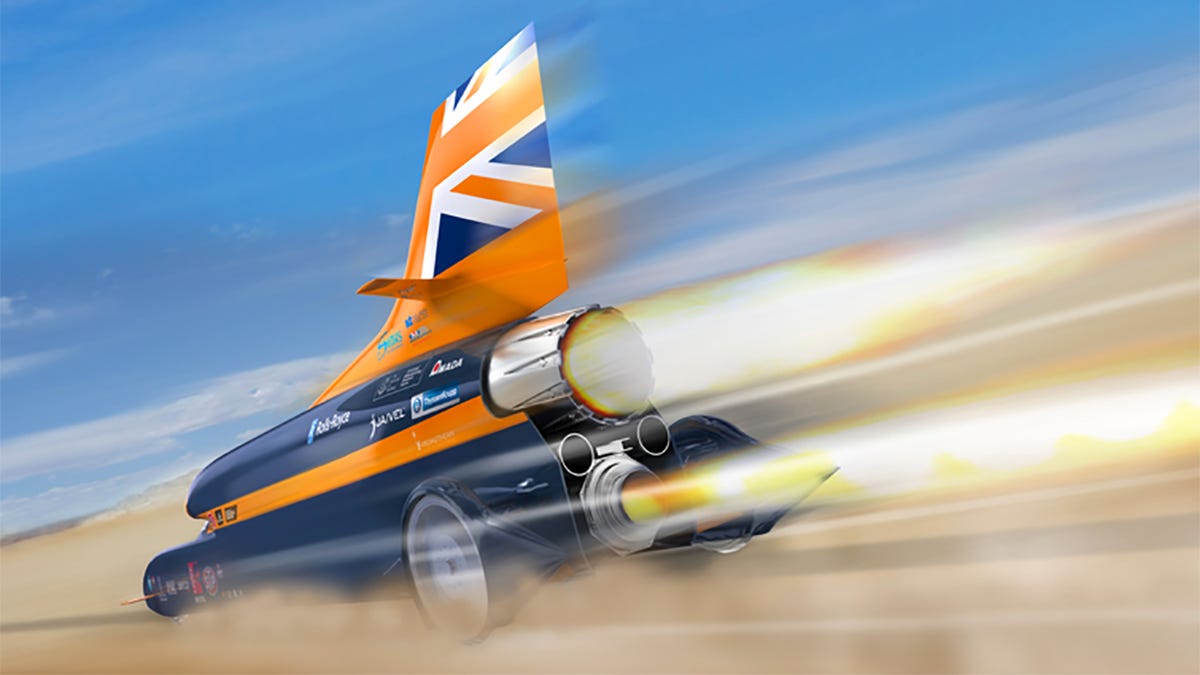Bloodhound SSC: Breaking the boundaries
Practical mechanics escapes many people. Others can happily maintain a bicycle, or build their own engine. But how many people can build a car capable of over 1,000mph? These people can.

1997 was a good year for me. I can't remember why it was a good year, but I remember enjoying it immensely. The summer was glorious, my friends were all delightful and life, through rose tinted glasses, was good. I was a happy 11-year-old and all was well. But while many details of '97 are vague, I remember one very vividly.
In the UK there's a news show for children called "Newsround." It's a short show that offers the world's highs and lows with a non-patronising yet informative tone. I remember that during '97, Newsround would talk about Thrust SSC, a car that would break the land speed record. It was planning on going faster than 700mph -- which for a child is simply mind-blowing. Actually, for a 27-year-old it's pretty mind-blowing too.
I remember watching Thrust SSC break the record on Newsround. It was a sight to behold - a thin black tube flanked by two MASSIVE jets firing itself through the desert, spitting massive dusty rooster tails as it sped through the sound barrier. Exciting stuff.
Now, nearly 20 years later there's a new SSC: Bloodhound. This time round there's one jet and a massive rocket. It does have a more standard engine on board, a racing engine but that's there to pump fuel rather than drive wheels.
As Bloodhound SSC is going to be a point of British pride, a car that keeps the land speed record British (it's been ours since 1983), you'd expect the cream of Britain's engineers to be working in a hyper-scientific, stunning lab with all the latest tools. That isn't the case. It's based on an industrial estate near Bristol. Essentially, Bloodhound SSC is the fastest shed car the world has ever seen. But who gives a damn about where it's built? The most important thing here is the team behind it.
Meeting the team was an utter privilege. Every person connected to Bloodhound has a smile on their face. That may have been for our visit, but it's hard to keep a false smile going for more than an hour or so -- we've all tried at a family Christmas.
Each member of the team has a well-defined part to play. Whether it's bolting Bloodhound together, making sure its parts are sourced and good to go, ensuring it won't take off at 500mph, liaising with its mentalist driver to ensure the 'wheel is right for him, making sure the launch location is clear of wheel-damaging rocks...you name it.
As well as building the fastest thing on earth, each Bloodhound SSC team member is focused on another goal: education. For them, Bloodhound isn't about going fast, it's about educating tomorrow's engineers. Anyone of any age can learn along with Bloodhound as the project is almost entirely open source. I say almost because its jet engine, an EJ200 from a Eurofighter Typhoon, has some internals that the Ministry of Defence isn't too keen on revealing. Still, young children can learn about rockets, while Ph.D. students can pour over the many equations necessary to make a lump of carbon fibre and metal breach Mach 1. On land.
Having watched Thrust SSC in 1997 on my little telly, it was breathtaking to see the bare bones of Bloodhound, its 1,000mph successor, being pieced together. What as more touching was seeing how the Bloodhound team all know that they're working on something that'll stick with generations to come, just as Thrust SSC did before. They know it, and feel privileged to be a part of it.
The record attempt is in 2016 and I wish them luck -- it's a hard job inspiring a generation, but someone's gotta do it.

